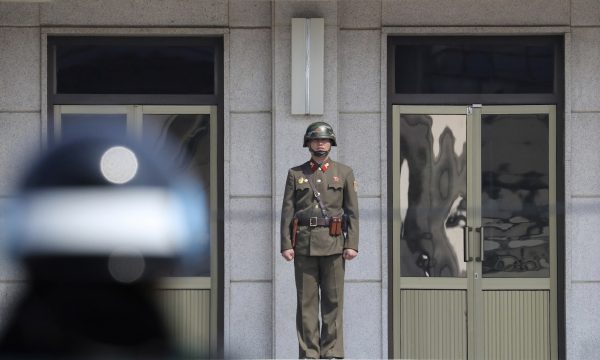These countries present a nuclear reality that the United States thus far has been prepared to live with rather than try to reverse.
North Korea is likely to complete the development of long-range ballistic missiles with nuclear warheads in two or three years, and a survivable second-strike capability a lot faster, as pointed out by Japan’s former administrative vice-minister for foreign affairs and chief negotiator with North Korea, Hitoshi Tanaka.
While the previous Kim Jong-il regime used its nuclear and ballistic missile programs more as political cards for gaining economic assistance from the West, the current regime under Kim Jong-un is focused on rapidly taking their nuclear and missile capabilities to a new level. And these are no longer up for negotiation.
Given the increasing urgency of dealing with the ‘North Korea problem’, what are the options? As the new US Secretary of State Rex Tillerson acknowledges, two decades of diplomatic negotiations and other measures have conspicuously failed to divert North Korea from its nuclear course. The simultaneous application of ‘dialogue and pressure’ at most slowed or temporarily stalled the North’s nuclear and ballistic missile weapons development programs during the Kim Jong-il era.
But ever since Kim Jong-un succeeded his father in 2011, the almost total reliance on ‘pressure’ — sanctions applied both bilaterally and multilaterally under UN Security Council auspices — has merely elicited an acceleration of military advancements by the North.
The UN sanctions regime has been a failure because the only country with real economic leverage over North Korea — China — has chosen not to exercise it. As Tanaka observes, ‘the loophole involving border trade with China is essentially an open secret’. Moreover, China is not enforcing sanctions aimed directly at North Korea’s nuclear program.
This leaves the United States, Japan and South Korea with few options, all of which have major downsides. Among the many drawbacks of the high-risk option of using military force is the reality that the security of South Korea and Japan would be hostage to such an approach as the primary targets of North Korean military retaliation. On the other hand, if the risks of the North’s proliferating nuclear weapons, materials and know how to other state and non-state actors rise, or if it looks like leading by example in Northeast Asia, this may become the only option.
North Korea presents a particularly high-risk threat because of its focus on building offensive capabilities and its hostile intentions. North Korea’s nuclear missile program is vital for the survival of the Kim Jong-un regime — both in its deterrence of and military survival against perceived outside threats, and its domestic political survival where the nuclear and ballistic missile weapons programs act as the most potent sources of regime legitimacy.
This is a situation where, in military terms, only deterrence and the continuing assumption that Kim Jong-un is rational advise a ‘do nothing’ approach. But waiting for North Korea’s economic and political collapse represents a very slow road to resolution.
A potential solution to the impasse would be proactive regime change in North Korea. According to Thae Yong Ho, Korth Korea’s former deputy ambassador to the UK and its highest ranking defector, ‘toppling the regime is the only way’ to resolve the country’s nuclear threat. Although this would be difficult or even impossible to engineer, in the first instance, crafting an alternative leadership in the Kim Jong-nam mould would be a constructive first step in the development of a North Korean government in exile. China is the country best placed to sponsor such regime change through a combination of economic and financial pressure and proactive political engineering. As Tanaka rightly points out, ‘China continues to hold the key to the North Korea issue’.
After all, China is bearing some of the strategic costs of North Korea’s weapons programs. These include the deployment of THAAD in South Korea and possibly in Japan, as well as the solid commitment of the United States to Japan’s defence and to strengthening its role in the Asia Pacific.
North Korea is also contributing to the on-going militarisation of Japan, especially in terms of its missile defence programs and a greater military role in its alliance with the United States. A stronger alignment of US and Japanese strategic goals and a solidification of the US alliance framework including trilateral US–Japan–South Korea defence cooperation are other negative by-products for China.
While China does not want a new democracy on its doorstep, a North Korea more open to political and economic liberalisation might be a constructive first step towards solving the ‘North Korea problem’ for both China, and the United States and its allies.
Aurelia George Mulgan is a Professor at the University of New South Wales, Canberra.

